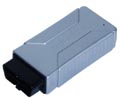- Adaptation MSS60
- |
- BMW Electronic Systems
- |
- Technical Info
- |
- Car Tech Info
- |
- MicroTronik
Adaptation values For DME engine control MSS60
List of the adaptation values with target values
Idling: -15...25 Nm
Throttle valves / idle actuator: 0.6...1.03 V
VANOS: Limit position of intake: 139...151 Deg KW
Limit position of exhaust: 122...134 Deg KW
Valve quality: 0.7...1.0 [-]
Accelerator pedal module: Pedal-position sensor 1: 0.6...0.85 V
Pedal-position sensor 2: 0.3...0.425 V
Lambda control: Lambda adaptation
Knock Control : Knock adaptation angle: -5...0 Deg KW
Catalytic converters: Limit value USA: Max. 1.1 [-]
Limit value non-USA: Max. 1.0 [-]
Trimming control: Limit value USA: -24...24 %
Limit value non-USA: -26...26 %
Fuel pressure control: Factor: 0.75...1.4 [-]
Offset: -15...15 %
1. Idling
Idle speed is set by the DME via the idle actuator to the relevant nominal value. Control of the idle speed is based on torque. If there are deviations from the nominal idle speed, the speed is adapted by increasing or reducing the engine torque. This increase or decrease is recorded in the idle-speed adaptation.
Positive values mean that the idle actuator is opened further.
2. Throttle valves / idle actuator
Sequence of throttle-valve adaptation:
· The throttle valves are pressed by the DME into the (closed) limit position.
· The activation is stopped and the throttle-valve sensor value that is then measured is stored as the adaptation value.
Sequence of idle-actuator adaptation:
· The idle actuator is pressed by the DME into the (open) limit position.
· The idle-actuator sensor value that is then measured is stored as the adaptation value.
3. VANOS
The DME learns the end stop of the VANOS from the limit position adaptation.
4. Accelerator pedal module
The voltage values of the two Hall sensors in the accelerator pedal module are measured in closed throttle position and stored as adaptation values.
5. Lambda control
The lambda adaptation shifts the control status of the oxygen-sensor control.
· Offset: positive values mean enrich (active in the range of smaller injection quantities)
6. Knock Control
Knocking cylinders are statistically evaluated by the Digital Engine Electronics and the result is used to calculate a retraction angle. This retraction angle is stored as an adaptation value.
With the engine running, the current ignition timing is corrected with the adaptation value. Depending on the operating range, the adaptation value is weighted.
· Negative value: correction in direction retarded
Possible influences on the knock adaptation:
· Fuel quality
· Fault at an intake air temperature sensor
· Oil coking, oil consumption
· Fault at the spark plugs
7. Catalytic converters
This catalytic converter adaptation checks the oxygen accumulation capability of the catalytic converters. If there are deviations from the target values, the system test for catalytic converters must be run.
8. Trimming control
The trimming control checks the aging of the oxygen sensors and catalytic converters. The adaptation value is used to influence the oxygen-sensor control.
9. Fuel pressure control
With the engine running and low fuel requirement, the regulation of the desired fuel delivery pressure requires a certain cycle ratio for activation of fuel pump. This cycle ratio is compared with the cycle ratio that the DME calculates for the pilot control function.
Deviations in the two cycle ratios are stored as an offset and as a factor. This corrects the cycle ratio of the fuel pressure control. The offset value corrects cycle ratios at low loads; the factor corrects cycle ratios at higher loads.
Possible influences on the fuel pressure control adaptation:
· Fuel filter clogged
· Soiled or worn collectors of the fuel pump, above all with long running periods.
· Internal leak in the fuel pump due to wear, above all with long running periods.
These influences increase the factor.
is one of the best Professional scan tools to for BMW; Autohex allows you to diagnose, code, program/flash ecus, replace with used ECUs, and add new keys for BMW. For more information: BMW Scan Tool
Programming BMW F Series


